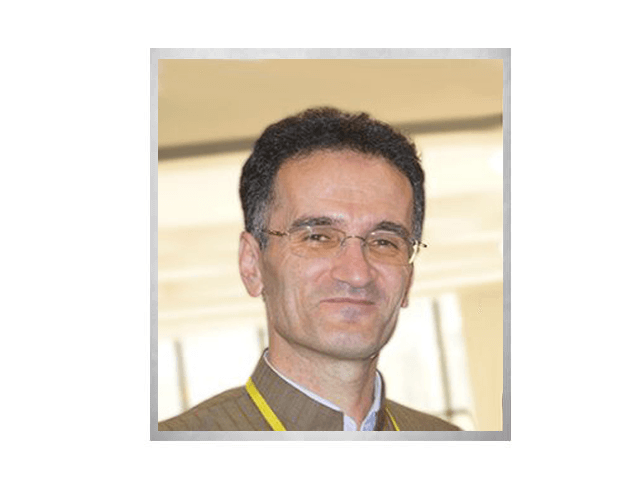
Hassan Bevrani
IEEE Fellow
University of Kurdistan, Iran
Talk Title & Abstract
Microgrid Control: A Critical Review and Recent Findings
The microgrid concept provides a quite appealing solution for overcoming the challenges of integrating renewable energy sources and distributed generators into the power grids. Advances in microgrid control have significantly facilitated this issue. Microgrid control refers to the application of control theorems and relevant technologies for stabilizing and enhancing the performance of microgrid operation, following various disturbances in different operating modes. Some of most important microgrid control issues in MGs are active and reactive power sharing, synchronization methods, voltage and frequency regulation services, emergency control, cybersecurity, power control and energy management.
This speech in addition to fundamental control requirements, will present a critical review on the current control layers classification based on the “dynamic timescale”, and “power rate”, by addressing the significant shortcomings. Then, the “impact area” and “responsible source” are emphasized to propose an updated hierarchical control structure. The speech will be supplemented with number of illustrative examples.
Biography
Hassan Bevrani received a PhD degree in electrical engineering from Osaka University (Japan). Currently, he is a full professor, IEEE fellow member, and the program leader of the Smart/Micro Grids Research Center (SMGRC) at the University of Kurdistan. Over the years, he has worked as an experienced research fellow and visiting professor with Osaka University, Kumamoto University, Kyushu Institute of Technology, Doshisha University, Nagoya University (Japan), Queensland University of Technology (Australia), Centrale Lille (France), and Technical University of Berlin (Germany). He is the author/coauthor of 9 international books, 15 book chapters, and over 500 journal/conference papers. His current research interests include microgrid dynamics and control, smart grid operation and control, and intelligent/robust control applications in the power electric industry.
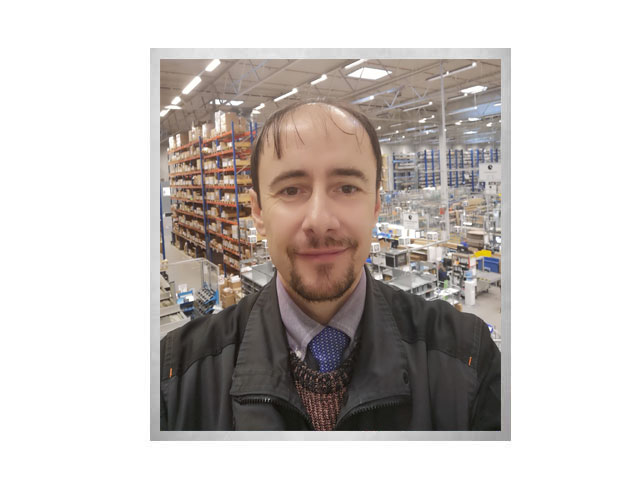
Michael Rada
President & Project Father
IBCSD, Czech Republic
Talk Title & Abstract
INDUSTRY 5.0 GLOBAL ROADMAP 2024-2025
When I realized back in 2010, that no one in the world tries to prevent waste from happening on the industrial scale I prepared and launched the first project related to the secondary utilization of single-use wooden packaging. The project was successful, and three years later I started as a laterpreneur at the age of 42, now part of my professional journey, utilizing the knowledge and experience collected in 22+ years in logistics.
First I named and introduced INDUSTRIAL UPCYCLING to my industrial clients and on December 1, 2023, for the first time in history, the term INDUSTRY 5.0 was used in an article named INDUSTRY 5.0 FROM VIRTUAL TO PHYSICAL, that made me according to researchers, academics and scientists to the Founder of INDUSTRY 5.0 the same as Karel Čapek, is the Founder of the term “ROBOT” which he introduced 75 km from birthplace of INDUSTRY 5.0 in the year 1921.
In just 8 years of existence, without single funding, incentives, or any other third-party financing become INDUSTRY 5.0 the leading global industrial trend of the century thanks to the fact that since the very beginning followed one aim TO BUILD WASTELESS WORLD FOR ALL.
Biography
Mr. Rada, born on December 24, 1971, is an experienced business professional equipped with 30+ years of rich business experience. He started his business career as a steel factory worker in 1990. Back in 2013 he invented and developed the systematic waste prevention methodology called INDUSTRIAL UPCYCLING and started to implement it in the real business and industrial environment of Czechia. Two years later INDUSTRIAL UPCYCLING becomes the ground stone of INDUSTRY 5.0 which was launched on December 1st, 2015 by a published article named INDUSTRY 5.0 FROM VIRTUAL TO PHYSICAL.
Mr. Rada has no Academic Education, he is not a scientist, politician or celebrity, despite that he held webinars and talks on more than 450 Universities, Schools, Events all over the Globe and INDUSTRY 5.0 become part of EUROPEAN SUSTAINABLE DEVELOPMENT FRAMEWORK introduced by EUROPEAN COMMISSION on January 7, 2021, so as it resonates at the ground of UNITED NATIONS conference on October 19, 2021.
In 2020 INDUSTRY 5.0 was named one of the TOP TEN INDUSTRIAL TRENDS of the DECADE.
Mr. Rada has taken Advisory role to multiple organization, companies and Projects, including The Government of India, CAPTURE HIGH (USA), BEFORE3020 (USA), EIGHTQUBE (USA+INTERNATIONAL) and he has established and lead the PROFUSION ACADEMY and many more.
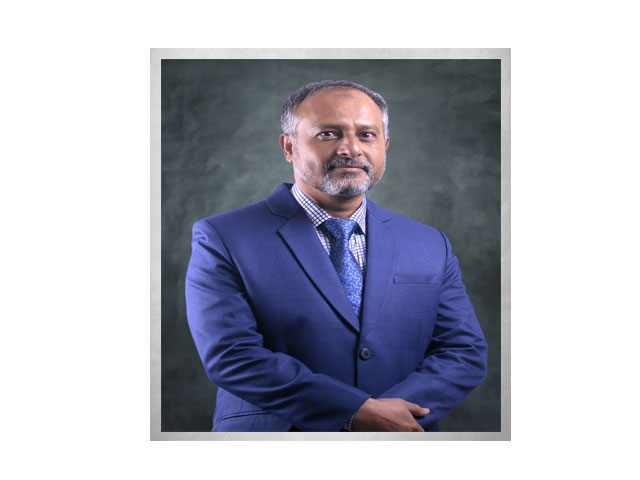
Mayeen Uddin Khandaker
Professor
Sunway University, Malaysia
Talk Title & Abstract
In search for noble material for medical and industrial radiation dosimetry aligns with the 5th Industrial revolution
Effective clinical uses of ionizing radiation (IR) have involved dosimetric procedures. Thermoluminescence (TL) dosimetry is useful in a variety of fields, such as clinical research, individual dosimetry, and environmental dosimetry, amongst others. However, it is well documented that ionizing radiation has various effects on human health, typically regarding deterministic and stochastic biological risks associated with DNA alterations, genetic mutation, etc. It means that the risk of ionizing radiation can outweigh the benefits if it has not been used in a controlled manner. Thus said, to protect society from the potentially harmful effects of radiation, it is critical to measure the radiation dose received by patients as well as radiation workers. Therefore, a dosimeter is a device that plays an important role in the undertaking of radiation protection monitoring and quality control of radiation therapy treatment. Over the past few decades, in the quantification of absorbed dose and also in QA programs, several dosimeters such as semiconductor diodes, radiographic and radiochromic films, thermoluminescence dosimeters (TLDs) and metal–oxide field effect transistors have been utilized. Note that each type of dosimeter has its inherent limitations including poor spatial resolution, non-tissue equivalence, and the requirement of high bias voltage to achieve an acceptable collection of charges, especially for ionization chambers. Therefore, there is a need to develop new technologies that offer low-cost and high spatial resolution dose monitoring systems throughout the treatment process to improve the accuracy of the treatment delivery.
Worldwide, there is on-going intensive research into the adaptation of silica- and carbon-based media for a wide variety of applications. Present study is designed to explore the potential of silica/carbon media for safe clinical radiation applications. Herein, the TL dosimetric properties of silica- and carbon media irradiated by X-ray, gamma-ray, electron and neutron will be investigated. Following to optical characterization, the structural alterations of silica- and carbon-based media will be studied via state-of-the-art techniques, including Raman, Photoluminescence and X-ray diffraction spectroscopy in order to understand the nature and distribution of defects in its crystal lattice structures that produce the luminescence signal. It is expected that the findings may help to develop a novel device to be useful as a low-cost passive radiation dosimeter, with applications in radiotherapy and manufacturing.
Biography
Mayeen Uddin Khandaker, Ph.D. (Korea), MSc (Ctg. Univ, 1st class 1st), BSc (Ctg. Univ, 1st class 1st) is a Professor of Applied Physics and Radiation Technologies at Sunway University, Malaysia. He has worked for and with a number of institutions, including the University of Malaya (Malaysia), the International Atomic Energy Agency (Austria), American International University-Bangladesh, and the Korea Atomic Energy Research Institute (Korea).
Prof. Mayeen has recently been elected as an expatriate fellow of Bangladesh Academy of Sciences. He has been serving as a senate member of Sunway University, Malaysia since 2018. He has also been serving as a visiting scientist at the Physical and Chemical Sciences (RIKEN, Japan) and the National Institute of Radiological Sciences (Japan) since 2012. He published more than 563 research papers (WoS/Scopus-indexed) with a total citation of > 9970. Professor Mayeen is an Associate Editor for the Journal of Radiation Physics and Chemistry (Elsevier), Handling Editor of Physics Open (Elsevier), and Editor of Scientific Reports (Nature Publishing Group). Professor Mayeen produced more than 14 PhDs, and also served as one of the Chief Scientific Investigators for a CRP on theranostic radionuclide production assigned by the IAEA.
Professor Mayeen is the recipient of the ‘Excellence in Research-2022 (Commendation)’ by Sunway University, Malaysia. His service to the scientific community has been recognized and acknowledged for instance by Elsevier as one of its most valuable reviewers for the years 2016, 2017, 2018, and 2021. Professor Mayeen is also listed as one of the top 2% highly cited researchers by Elsevier-Stanford University for the years 2020, 2021 and 2022 consecutively.
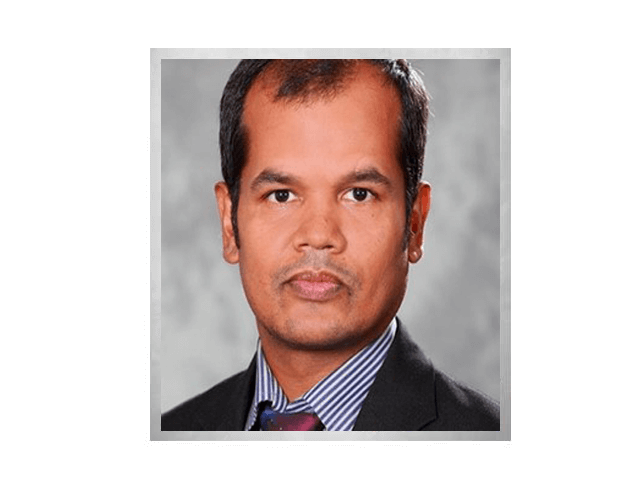
Jahangir Hossain
Professor , School of Electrical and Data Engineering
University of Technology, Sydney, Australia
Talk Title & Abstract
Resilience and Reliable Power Supply for Remote Communities using Microgrids
During the next decade, microgrids will emerge as a major enabler of the smart grid for the integration of small and medium-sized DER units into the electricity grid. Microgrids offer a promising cost-effective solution to the integration of renewable energy with reduced losses, lower transmission and distribution costs, higher energy efficiency, and a number of environmental and economic benefits. Microgrids are currently controlled independently, according to local requirements and aims, often based on local control strategies and without coordination with other microgrids. However, it is anticipated that future sub-transmission and distribution systems will be composed of several interconnected microgrids and form a complex electric network. Interconnecting together multiple microgrids can lead to undesirable dynamic behaviors, which have not been adequately examined so far. The coexistence of multiple energy resources with differing dynamic properties has raised concerns over the stability, control, and efficiency of microgrids.
This presentation will focus on the outcomes from a feasibility study conducted at Derwent Bridge, Tasmania, Australia. It will provide background information, project aims, methodology and outcomes. It will highlight the developed algorithms for energy forecasting, community benefit analyses and design of microgird.
Biography
Dr. Jahangir Hossain received B.Sc. and M.Sc. Eng. degrees from Rajshahi University of Engineering and Technology (RUET), Bangladesh, in 2001 and 2005, respectively, and a Ph.D. degree from the University of New South Wales, Australia, all in electrical and electronic engineering.
He is currently working as a Professor at the School of Electrical and Data Engineering, University of Technology Sydney. Before joining there, he served as an associate professor in Macquarie University for 3.5 years, senior lecture and a lecturer in the Griffith School of Engineering, Griffith University for five years and as a research fellow in the School of Information Technology and Electrical Engineering, University of Queensland, Australia.
Previously, he worked as a lecturer and assistant professor at Rajshahi University of Engineering Technology, Bangladesh for six years. He has published more than 300 articles in international refereed journals and conferences. He is a senior member of IEEE, editor of two IEEE journal and secured more than 5M research grant. His research interests are power systems, wind generator integration and stabilization, voltage stability, micro grids, robust control, electrical machine, FACTS devices, and energy storage systems.
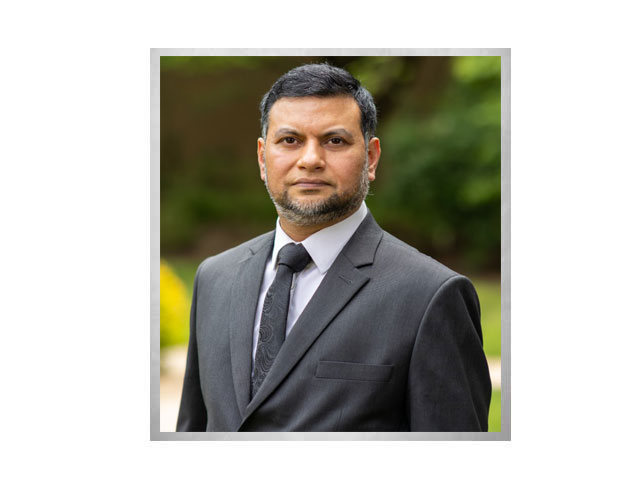
Abdun Mahmood
Associate Professor
La Trobe University, Melbourne, Australia
Talk Title & Abstract
Navigating the Complex Landscape of Smart Grid and SCADA System Security
In this keynote presentation, we delve into the evolving landscape of Smart Grid and SCADA system security, focusing on three pivotal research areas. First, we explore Data Privacy and Integrity, highlighting innovative federated learning frameworks and blockchain applications that enhance privacy and operational efficiency. Next, we dissect Smart Grid system vulnerabilities and tackle the pervasive threat of False Data Injection (FDI), presenting cutting-edge detection and mitigation strategies. Lastly, we look into Cyber-Physical Security Integration that bridges the gap between digital and physical technologies, emphasizing novel approaches to detect power system device-based attacks and distinguishing cyber-attacks from physical faults. This presentation synthesizes the latest research, offering insights into safeguarding our critical infrastructure against emerging cyber threats.
Biography
Dr. Abdun Mahmood received his PhD from the University of Melbourne, Australia, in 2008. He completed his MSc (Research) degree in computer science and the B.Sc. (Hons) degree in applied physics and electronics from the University of Dhaka, Bangladesh. Dr. Mahmood had an academic career in University spanning over two decades, spanning multiple universities and countries including University of Dhaka (Bangladesh), RMIT University (Melbourne, Australia), UNSW (Canberra, Australia) and currently in La Trobe University (Melbourne, Australia) as an Associate Professor (Reader).
Dr. Mahmood leads a group on AI/ML and Cybersecurity including Anomaly Detection in Smart Grid, SCADA security, Memory Forensics, and False Data Injection. Dr. Mahmood has been successful in attracting over a $1M+ in grant funding as a CI, including two Australian Research Council funded research Projects. He has published over 100+ articles in mostly reputed journals and conference proceedings. He has supervised more than 20 PhD students including 12 as their primary supervisor.
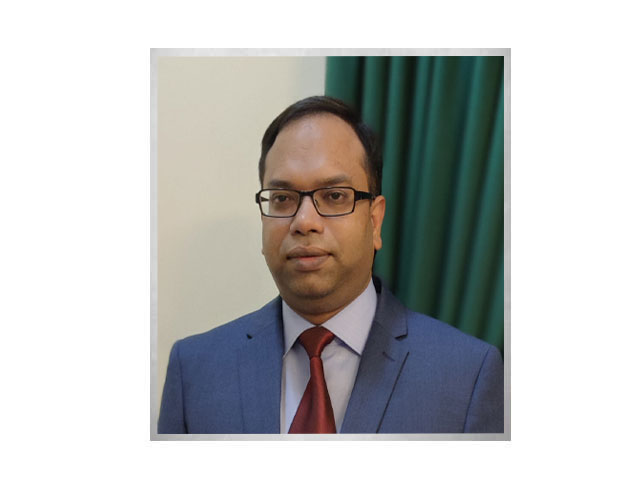
Razib Islam
Senior Manager
Ooredoo, Qatar
Talk Title & Abstract
Telco to TechCo: Software Defined Networks, 5G and Edge Computing
Telecommunication network technologies are rapidly going through a digital transformation journey. From an industry perspective, it is imperative that the adoption of state-of-the-art telecom technologies such as 5G, Internet of Things (IoT), edge computing, multi-cloud networks, software defined networks are well utilised to realise the full potential. The use cases and prospects of these newer technologies would need synergies from Telco, Hyper-scalers, Cloud Service Providers and ISVs to play critical roles in the transformation journey towards industrial 4.0/5.0 and beyond.
In this talk, we will cover the latest industry trends & perspectives of the telecommunication technologies within the broader ICT landscape. We will discuss on application-centric use cases, prospects and ecosystem for the adoption of these technologies towards consumers, business and enterprises and for the ‘beyond connectivity’ journeys.
Biography
Dr. Razib Islam is a seasoned telecommunication technology strategist, architect and product development specialist (over 20 years of experience) across micro & millimetre wave, wireless, fibre-optic, software-defined networks and IoT integrated network/private edge architecture solutions. Currently, he is a Senior Manager for B2B fixed connectivity platforms in Ooredoo Qatar.
Razib commenced his career as a lecturer in Electrical & Electronic Engineering at Islamic University of Technology, Bangladesh back in 2002. In his early stages of career, he was a graduate researcher in Macquarie University and later in National ICT Australia (NICTA) at the University of Melbourne, Australia. Later, he worked as a design quality lead in Visionstream, Australia for the largest ever nation-wide broadband infrastructure project of Australia called National Broadband Network (NBN). He also worked as a Senior Telecom Consultant in GQI Consulting Ltd (a management consulting company) based in Melbourne prior to joining in NBN Co (a Government Business Enterprise for the nation-wide broadband infrastructure) as a Solution Architect for advanced telecom technologies.
While wearing multiple hats in industry and R&D career over the past years, Razib developed a high level of expertise and experience with technologies like passive optical network, fibre-to-the-premises/nodes and more recently in emerging Internet of Things (IoT), 5G, software defined networks, edge computing, cloud technologies, global connectivity, satellite connectivity solutions etc.
Razib has over 50 publications including top tier international journals, conferences and book chapter. He serves regularly as industry panellist and key note speaker, apart from being reviewer and technical program committee member in international journals & conferences. He is a member of IEEE, and participated actively in industry forums such as TM Forum, ONF, ETSI, ITU, and BBF.
Workshop Speaker
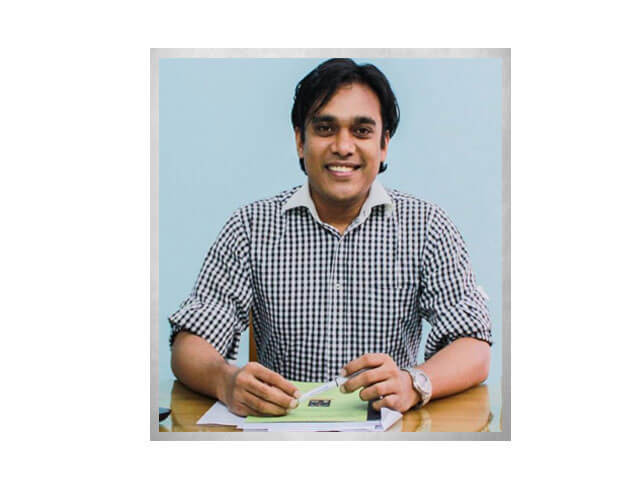
Md Atiqur Rahman Ahad
Computer Science & Digital Technologies
University of East London
Talk Title
Humble Artificial Intelligence (AI) & Ethics: Some Perspectives ‘Humble AI’ emphasizes the responsible development and deployment of AI systems that are cognizant of their limitations and potential shortcomings. It advocates the crafting of AI systems that not only acknowledge their own fallibility/imperfections but also actively pursue transparency, accountability, and collaborative engagement with human counterparts. This approach contrasts with the notion of an ‘all-powerful AI’ that operates autonomously and without human oversight. Humble AI acknowledges that AI systems are tools, and as such, they should be used responsibly and ethically. By understanding and respecting their limitations, AI systems can be harnessed effectively to enhance human capabilities without compromising human values and well-being. The principles of Humble AI promote a more balanced and collaborative relationship between humans and AI, ensuring that AI remains a force for good in society. Overall, the core principles of Humble AI emphasize the development and deployment of AI systems that are: ethical and aligned with human values, conscious of their limitations, transparent and accountable, human-centric and not to replace human beings, respectful of human privacy and autonomy, socially responsible and beneficial, designed for safety and reliability. A few core challenges lie in balancing transparency and confidentiality, aligning AI with human values, avoiding bias, etc. AI and ethics must not be ignored due to various reasons and risk issues. Therefore, this keynote will highlight various perspectives of Humble AI and ethics.
Biography
Md Atiqur Rahman Ahad, Ph.D. (SMIEEE, SMOPTICA) is an Associate Professor of Artificial Intelligence & Machine Learning (Champion, Research & Innovation), Dept. of Computer Science & Digital Technologies, University of East London. He is a Guest Professor at Kyushu Institute of Technology, Japan; Visiting Professor, at UCSI University, Malaysia; (TUBITAK) Visiting Professor, at Bahcesehir University, Turkey; and a Visiting Professor (former) at University of Brawijaya, Indonesia. He became a Professor at the University of Dhaka (DU) in 2018 and served as a specially appointed Associate Professor at Osaka University (2018~2022). He works on AI, ML, healthcare, IoT, well-being, vision, and biometrics. He studied at Kyushu Institute of Technology (PhD), University of New South Wales (MCompSc), and DU (BSc(Honors), MSc). He got 55+ awards/recognitions (e.g., UGC Gold Medal). He published 14 books (more to appear soon), 220+ peer-reviewed papers & book chapters. Ahad was invited as keynote/invited speaker 150+ times at different conferences/universities. He has/had over 100 PhD/Masters/UG researchers as supervisor/co-supervisor. He is an Editorial Board Member, Scientific Reports, Nature; Associate Editor, Frontiers in Computer Science; Editor, IJAC; Editor-in-Chief, IJCVSP; General Chair: 6th ABC, 11th ICIEV, 6th IVPR; Workshop Chair, 17th IEEE PiCom; Publication Chair, 2018 IEEE SMC; Vice Publication Co-chair & Vice Award Chair, 17th WC of IFSA; Guest Editor in Pattern Recognition Letters, JMUI, JHE, etc. He serves as reviewer of IEEE TPAMI, IEEE TBIOM, IJCV, Pattern Recognition, IEEE Sensors, SR Nature, JACIII, IEEE TAC, ACM IMWUT, PRL, CVIU, MVA.
© Green University of Bangladesh. All Rights Reserved.
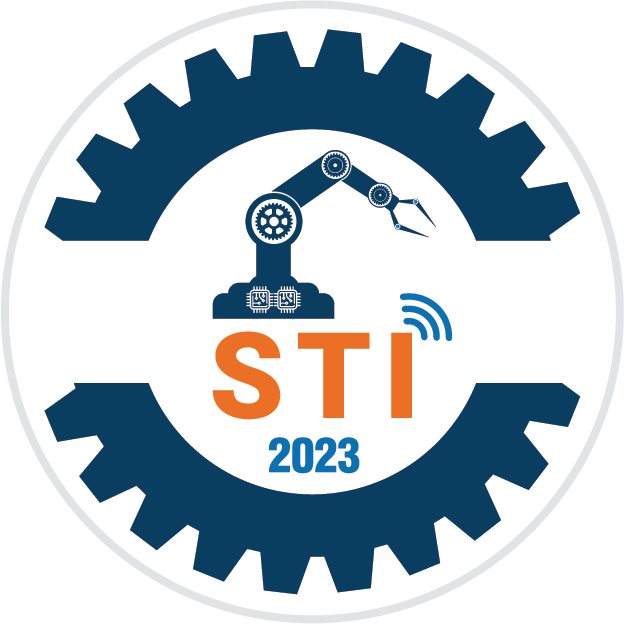 STI-2023
STI-2023